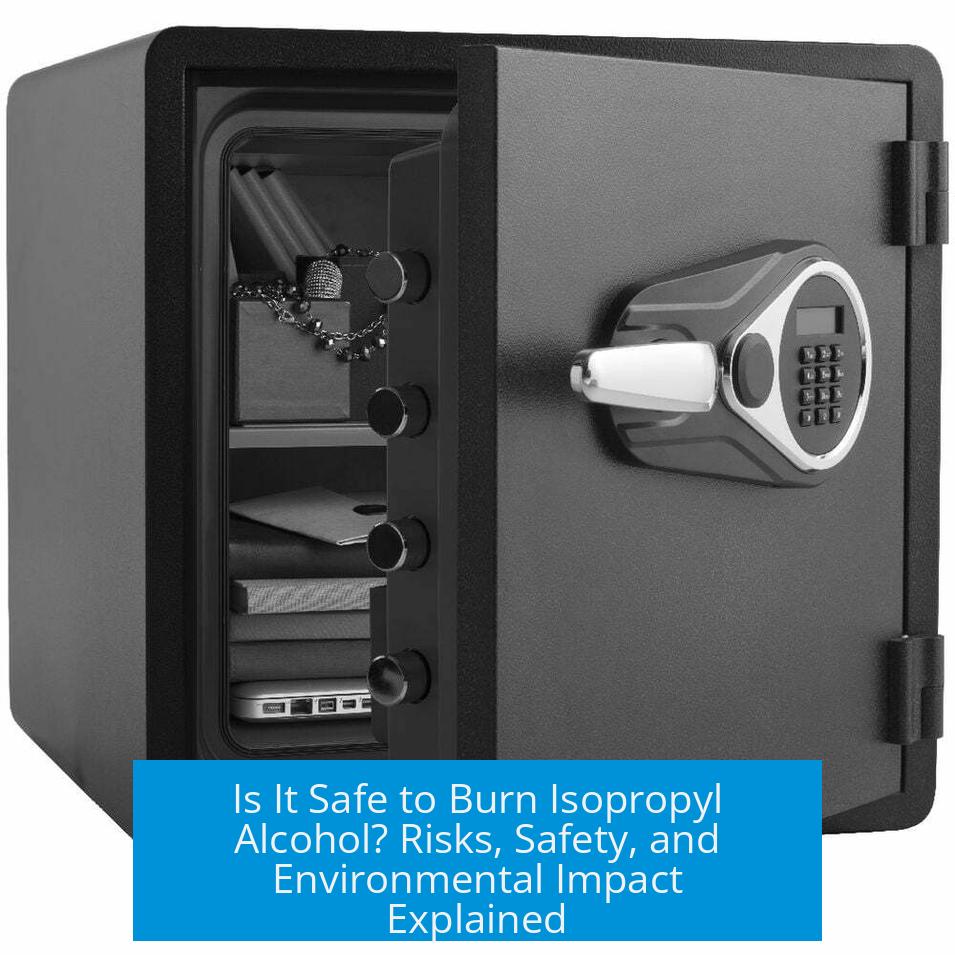Is It Safe to Burn Isopropyl Alcohol?
Burning isopropyl alcohol can be safe under controlled conditions, but it carries specific risks that require caution. Like many liquid fuels, pure isopropyl alcohol burns cleanly, producing mainly carbon dioxide, water vapor, and heat. However, invisible flames, fire hazards, and ventilation needs demand careful attention to safety.
Safety Compared to Other Liquid Fuels
Isopropyl alcohol burns similarly to ethanol and methanol, often more safely than gasoline or kerosene. Relatively pure alcohols are less prone to producing soot or toxic byproducts. This makes them common for small burners or laboratory use. However, burning still creates heat and fire risks requiring precautions.
Risks and Dangers of Burning Isopropyl Alcohol
- Invisible flames: The flame often appears almost invisible, increasing burn risk. Spills on skin can ignite without immediate notice, causing severe burns. Laboratory burners fueled by isopropyl alcohol produce small, faint flames needing careful handling.
- Fire hazards: Isopropyl burns hot and should never be extinguished with water. Fires can escalate if the fuel spills or leaks. Users must avoid knocking over containers and ensure burners are stable.
- Ventilation needed: Combustion produces carbon dioxide and small amounts of carbon monoxide if incomplete burning occurs. Adequate airflow—such as opening a window—is necessary to reduce gas buildup and avoid respiratory effects.
Effects of Concentration and Additives
Higher concentrations like 91% isopropyl alcohol ignite more readily than 70%. Additives in commercial products may produce unpleasant odors when burned, which can affect experiences like cooking marshmallows. Pure isopropyl alcohol without additives poses fewer issues.
Additional Precautions and Advice
- Never use water to extinguish isopropyl alcohol flames; use a fire blanket or smother the fire instead.
- Keep hair, clothing, and flammable materials away from the flame.
- Never ingest isopropyl alcohol—it is toxic and can cause blindness.
- Ensure proper ventilation to prevent accumulation of combustion gases.
Environmental Impact
Burning isopropyl alcohol releases carbon dioxide, contributing to greenhouse gases. While tiny amounts used in controlled settings may have minimal impact, repeated or large-scale combustion adds to global warming concerns.
Key Takeaways
- Isopropyl alcohol burns cleanly but with nearly invisible flames that pose burn risks.
- Fire safety measures are essential; never extinguish with water.
- Use in well-ventilated areas to avoid accumulation of combustion gases.
- Concentration and additives affect flammability and odor.
- Avoid ingestion; isopropyl alcohol is toxic and not for consumption.
Is it safe to burn isopropyl alcohol compared to other fuels?
Yes, burning isopropyl alcohol is about as safe as burning most liquid fuels. Pure alcohol burns cleanly with mainly carbon dioxide and water vapor as combustion products.
Why is the flame from burning isopropyl alcohol sometimes dangerous?
The flame can be nearly invisible, leading to accidental burns. Spills burning on skin may not be noticed immediately, increasing the risk of injury.
Does burning isopropyl alcohol produce toxic fumes?
It mainly produces carbon dioxide and water vapor. Incomplete combustion can release carbon monoxide, so good ventilation is important during use.
Does the concentration of isopropyl alcohol affect its burning safety?
Higher concentrations like 91% burn more readily than 70%, but both are generally safe to burn. Some additives in commercial products might cause odor or irritation when burned.
What precautions should I take when burning isopropyl alcohol?
Avoid using water to extinguish the flame. Ensure proper ventilation and keep the liquid and flame away from flammable materials and body parts.





Leave a Comment